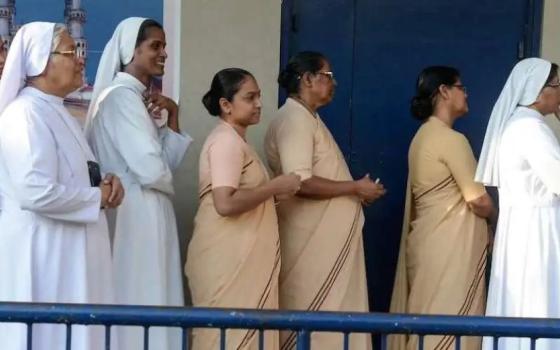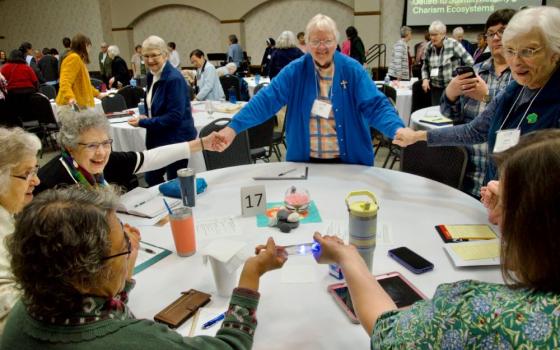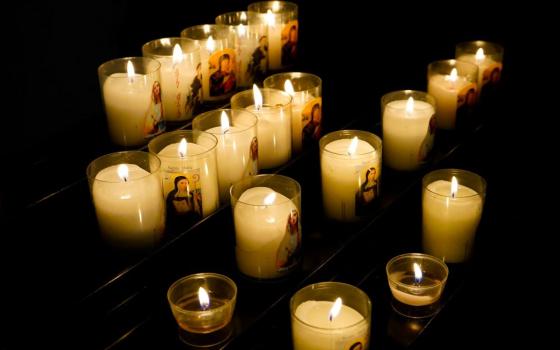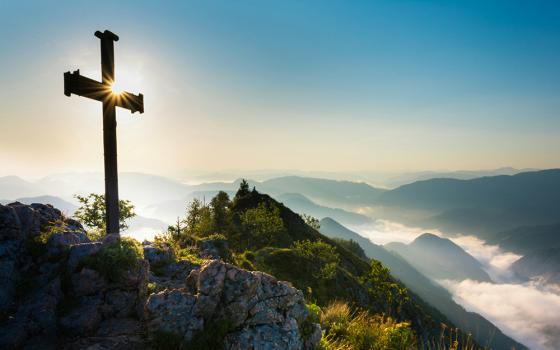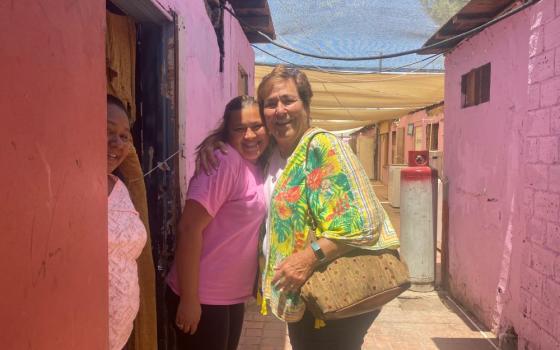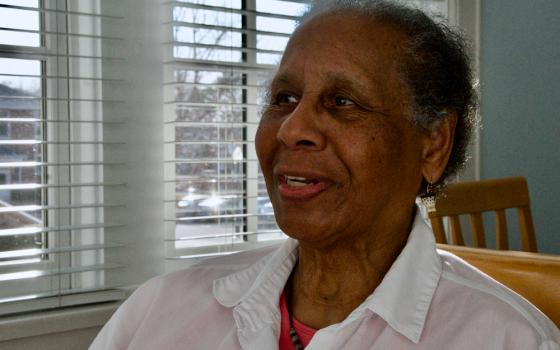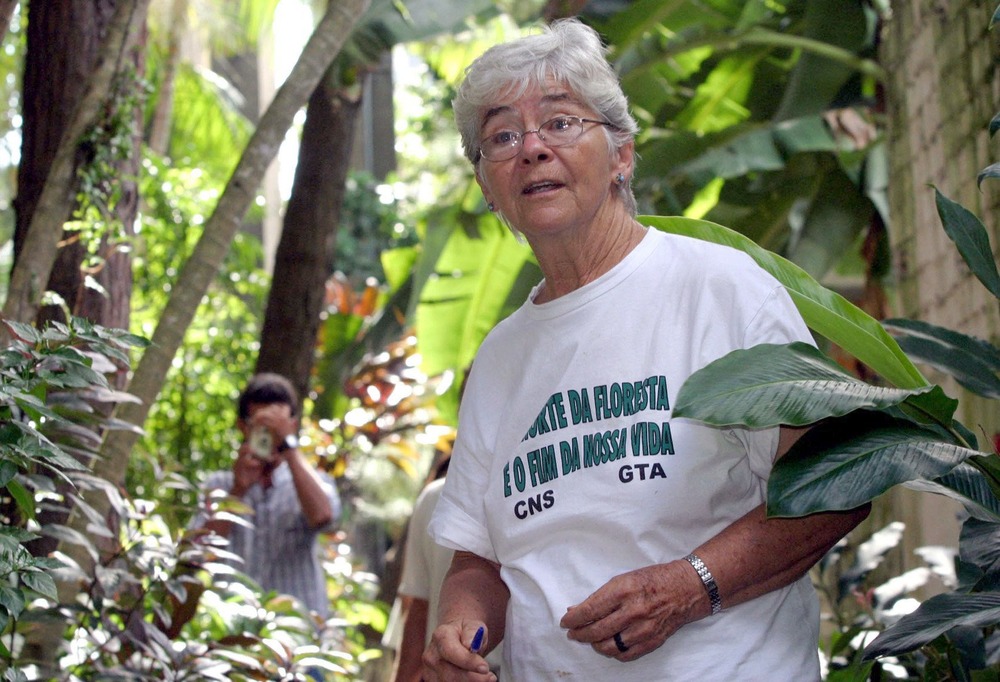
U.S. Sister Dorothy Stang, a member of the Sisters of Notre Dame de Namur, is pictured in a 2004 file photo in Belém, Brazil. Feb. 12, 2025, was the 20th anniversary of the killing of Sister Dorothy, a citizen of Brazil and the United States, who spent nearly four decades defending the rights of poor settlers as well as working to save the rainforest from powerful ranchers bent on destroying it. (OSV News/Reuters)
Deep in the heart of the Amazon rainforest, a new species of screech owl, dubbed the Xingu screech owl, was discovered by scientists in 2021. However, what caught the attention of many was the scientific name given to the bird: "Megascops stangiae."
While the Latin word "megascops" denoted the bird's species, the word "stangiae" was inspired by the name of Sister Dorothy Stang, a U.S.-born Sister of Notre Dame de Namur, who was killed on Feb. 12, 2005, by gunmen hired to assassinate the 73-year-old nun religious for her work protecting the Amazon forest and the people living there.
"I like to think Dorothy would find this absolutely fascinating and such a joy!" wrote Sister Judith Clemens, a Sister of Notre Dame de Namur and a close friend of Sister Dorothy, in a reflection shared with OSV News. "For me it is so fitting. It is symbolic of her life, her insistence on struggling against deforestation and the effects on both animals and humans, especially people made poor."
In the lead up to the 20th anniversary of the death of Sister Stang, who is considered by many as a "Martyr of the Amazon," a relic containing blood-soaked soil from the site of her murder was enshrined at the Basilica of St. Bartholomew on Tiber Island in Rome on Jan. 10.
The basilica was recognized as a shrine to the "new martyrs" of the 20th century in 2002 by St. John Paul II. The inclusion of Sister Dorothy's relics at the shrine made her the first American woman to be honored among the modern-day martyrs.
Born in Dayton, Ohio, Sister Dorothy professed her perpetual vows in 1956. A decade later, she began her ministry in Brazil. Her work would often involve going against ranchers and loggers who would resort to illegal tactics to pressure residents off their land.
Locals and peasant farmers saw an advocate and a fearless defender who did not allow herself to be intimidated. In an interview with OSV News Feb. 3, Sister Judith, who first arrived in Brazil in 1968 and worked alongside Sister Dorothy, recalled their time in mission aiding "tenant farmers in their land struggles."
"We walked with our people, listening to their stories and asking what they needed; what was God's dream for them," she said.
Sister Stang "was intelligent and knew well the land laws of Brazil, the rights of the farmers and the land demarcation of her region," allowing her to defend local farmers and the Indigenous population while attracting the ire of greedy ranchers.
"Dorothy spoke to government ministers, ranchers and her people in a characteristic kind soft voice at the same time you knew she meant business," Sister Judith told OSV News.
Advertisement
However, it was her boldness that made her a target, and a group of wealthy ranchers plotted to have her murdered.
On a rainy day on Feb. 12, 2005, Sister Dorothy was making her way to the tiny northern village of Boa Esperança Sustainable Development Project, where property belonging to peasant farmers and Indigenous residents was burned down.
Traveling on foot with her Bible in hand, the nun was taunted by several men who stopped her along the way. She opened her Bible and began reading as the men aimed their guns and shot her six times.
Sister Judith, who was living in Florida working with Brazilian immigration families when she heard the news of the Sister Dorothy's assassination, told OSV News, that she and her fellow sisters who worked in Brazil were well aware of the dangers they faced, including Sister Dorothy, who knew she "had a price on her head."
"In some ways, we never imagined it would happen both because we were nuns and because we were old!" she said. "It was a tremendous shock, of course."
However, the deadly act, which was meant to quiet anyone preventing the ranchers from stealing land, only emboldened residents angered by the nun's assassination to fight even harder. Less than a week after her death, Brazilian President Luis Inacio Lula da Silva issued a proclamation declaring the land Sister Dorothy lived and died for as protected property for sustainable development.
The "ranchers and loggers thought that killing Dorothy would bring so much fear that the farmer families would leave the area," Sister Judith said. "That has not happened and the organization among these small communities has flourished."
Nevertheless, Sister Judith told OSV News that while Sister Dorothy continues to stand "as a symbol of justice and hope for the people," the circumstances "have really not changed in terms of conflict over land rights" for residents in the Amazon who continue to fight to protect their land.
Sister Dorothy's legacy, however, continues to impact the world and the slain nun's "deep faith in the capacity of human persons to turn toward justice and goodness was, without a doubt, her gift to all of us," she said.
"Dorothy's understanding of the interrelatedness of all creation was a deep part of who she was. I say today that way before Pope Francis spoke of integral ecology, Dorothy was living it. Her single mindedness, her focus on all of creation was a part of her legacy," Sister Judith said.
"My personal image of Dorothy lying in the blood soaked soil, face down, blending her whole self into God's earth inspires me to live the Eucharist message: 'Do this in memory of me,'" she added. "We are called to pour ourselves out in love for God's creation. … ALL of God's creation."
